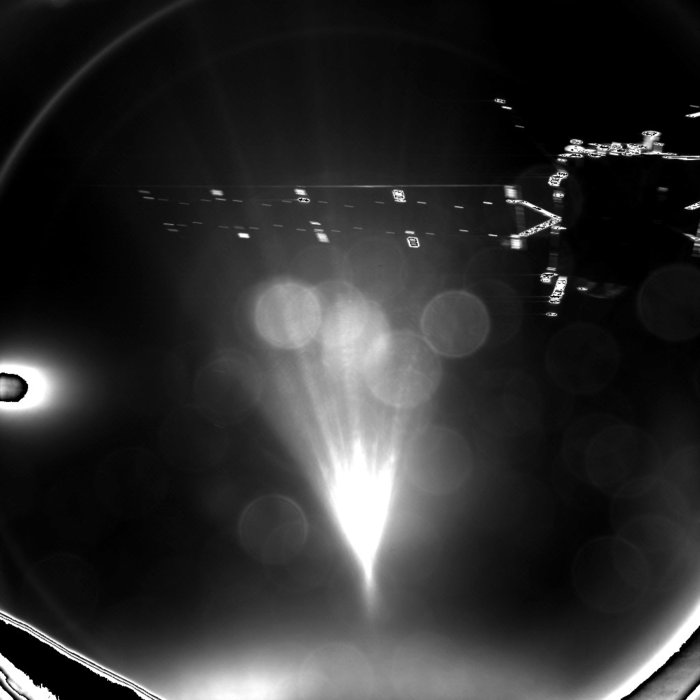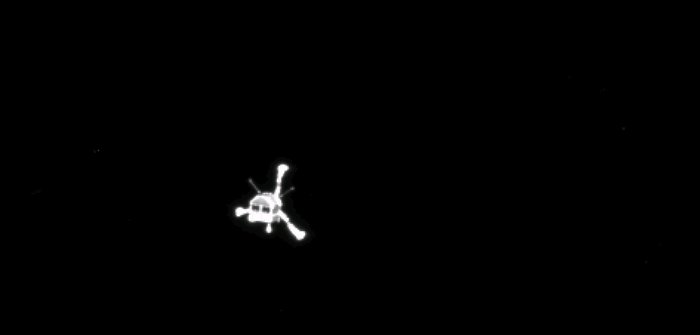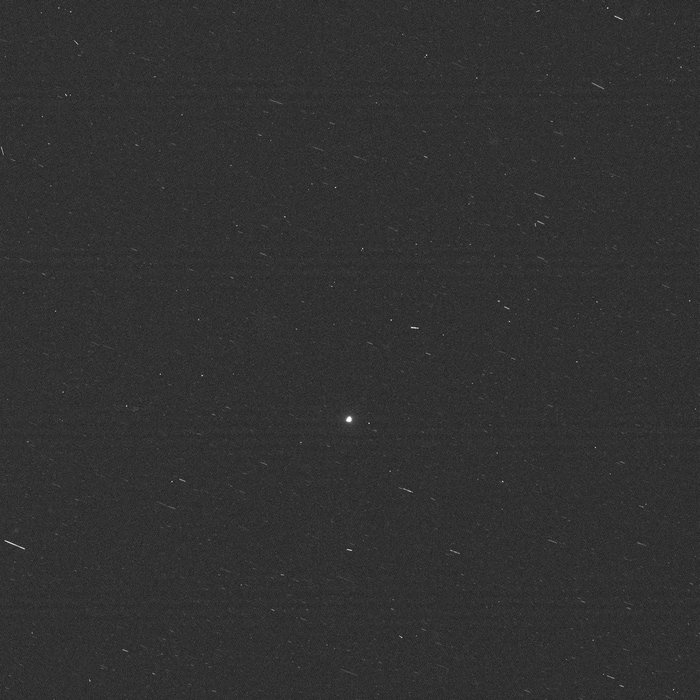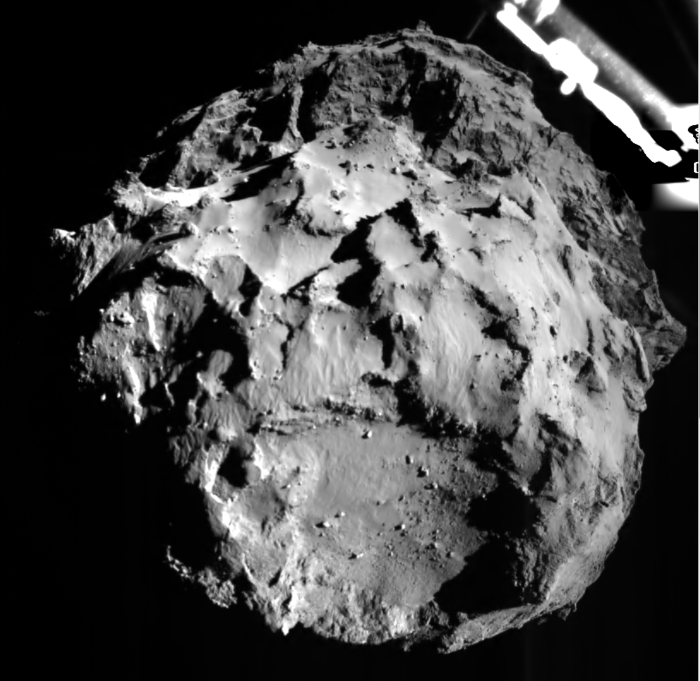See how Philae landed on a comet and made history
Before Rosetta’s lander Philae touched down on the surface of comet 67P/Churyumov-Gerasimenko at 8:03 a.m. Pacific time, it used its phalanx of cameras to document its roughly 7-hour journey from the main spacecraft toward the duck-shaped comet’s body.
The landing had its hitches; two harpoons meant to anchor the spacecraft to the comet's surface did not fire, and scientists are discussing how to proceed. Still, if all goes well, Philae will use its suite of instruments – including an alpha particle X-ray spectrometer as well as a gas chromatograph and mass spectrometer – to carefully land on and study the comet’s surface, making it the first spacecraft ever to do so.
Philae leaves the mothership

(ESA / Rosetta / Philae / CIVA)
Here, Philae takes a parting shot of the Rosetta main spacecraft shortly after the lander separates from its mothership close to 1 a.m. Pacific time. The image shows one of the main spacecraft's roughly 45-foot-long solar arrays – enormous panels meant to pull as much energy from the sun as possible as the spacecraft shuttled the lander across 300 million miles for 10 years to its final destination.
A farewell image before a harrowing journey

(ESA / Rosetta / Philae / CIVA)
The Rosetta main spacecraft took this farewell image of the Philae lander’s receding body as it descended toward the comet 67P/Churyumov-Gerasimenko on a harrowing 7-hour journey. Other spacecraft have intentionally smashed into a comet before, but the European Space Agency mission is the first to execute a controlled landing on a comet’s surface.
Small but mighty

(ESA / Rosetta / Philae / CIVA)
A small, bright mark in a dark sky, the Philae lander shrinks from view as it heads toward comet 67P/Churyumov-Gerasimenko in this image taken by the Rosetta main spacecraft. Even after separation, the Rosetta ‘mothership’ won’t abandon Philae on this strange, duck-shaped rocky body; the spacecraft will tag along with the comet on its journey around the sun through 2015.
Just a dot in the night sky

(ESA / Rosetta / Philae / CIVA)
The Philae lander is little more than a small bright dot to the Rosetta spacecraft’s camera as it heads toward comet 67P/Churyumov-Gerasimenko. The discoveries that Philae makes on the ground will complement the observations that the Rosetta orbiter makes from above the comet.
Incoming!

(ESA / Rosetta / Philae / CIVA)
The Philae lander takes a shot of the surface of comet 67P/Churyumov-Gerasimenko as it heads toward the uneven surface. The lander shot the image from nearly 2 miles away using its ROLIS instrument, a downward-looking camera perfect for shooting images during descent. The images will allow scientists with the European Space Agency’s Rosetta mission to study the surface's texture and microtexture.




